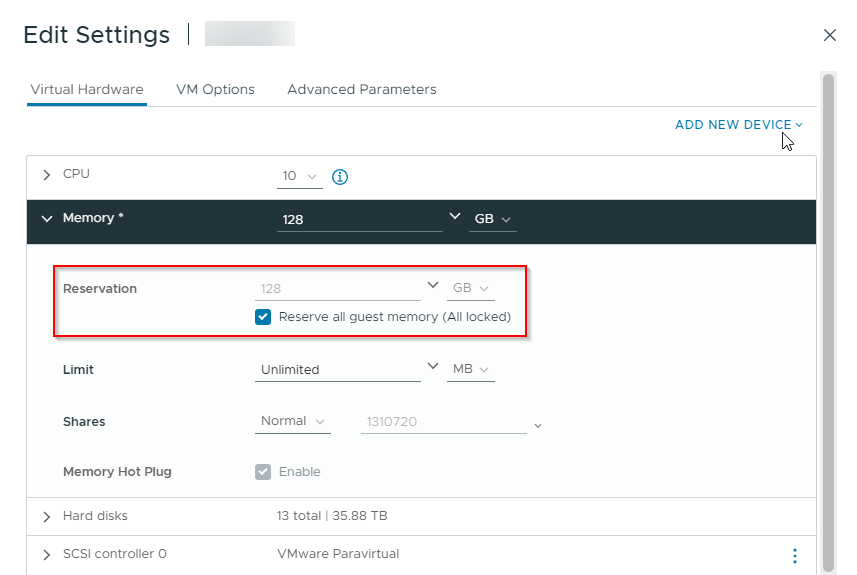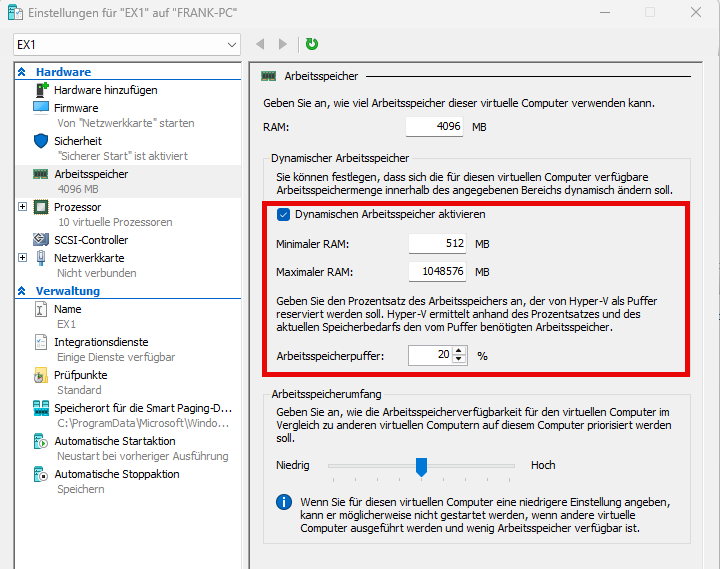It may happen that the Exchange Health Checker displays the following error in the report:
Dynamic Memory Detected: True 0GB is the allowed dynamic memory of the server. Not supported to have dynamic memory configured.

This error is displayed on virtualized Exchange Servers where the "Dynamic Memory" feature is enabled for the VM. Dynamic Memory is not supported for Exchange Server, therefore the Exchange Health Checker shows this error. This error can occur on Exchange Servers that have been virtualized using VMware or HyperV.
To resolve the error, the entire memory of the VM must be reserved for a VMware-based VM. The corresponding setting can be found in the VM properties under Memory and is called "Reserve all guest memory (All locked)":

"Reserve all guest memory" must be activated so that Dynamic Memory is switched off.
With a Hyper-V based VM, Dynamic Memory can also be switched off in the properties of the VM:

If Dynamic Memory was activated on the VMs, the hypervisor can no longer use unused RAM of the VM for other VMs. The entire working memory of the virtual machine must therefore be reserved and also be available on the hypervisor. Microsoft writes in addition:
Some hypervisors can overbook or dynamically adjust the available memory for a particular guest machine based on the perceived memory usage in the guest machine compared to the requirements of other guest machines managed by the same hypervisor. This technology is useful for workloads where memory is only needed for a short period of time and can then be freed up for other purposes. However, it is unsuitable for workloads that require continuous memory. Exchange (like many server applications that use in-memory data caching to optimize performance) is prone to poor system performance and an unacceptable user experience if it does not have full control over the memory allocated to the physical or virtual machine on which it is running. Therefore, the use of dynamic memory or memory overcommitment features is not supported for Exchange.
Danke für den Beitrag.
Das gleiche Thema hatten wir im Team. Dort kam u.a. das Best Practice Exchange 2019 Dokument von VMware zur Sprache. Siehe Link.
Man kann es nicht pauschalisieren. Es gibt kein richtig oder falsch.
https://www.vmware.com/docs/vmw-microsoft-exchange-server-2019-on-vmware-best-practices#page17
Seite 16 – 2.2.5